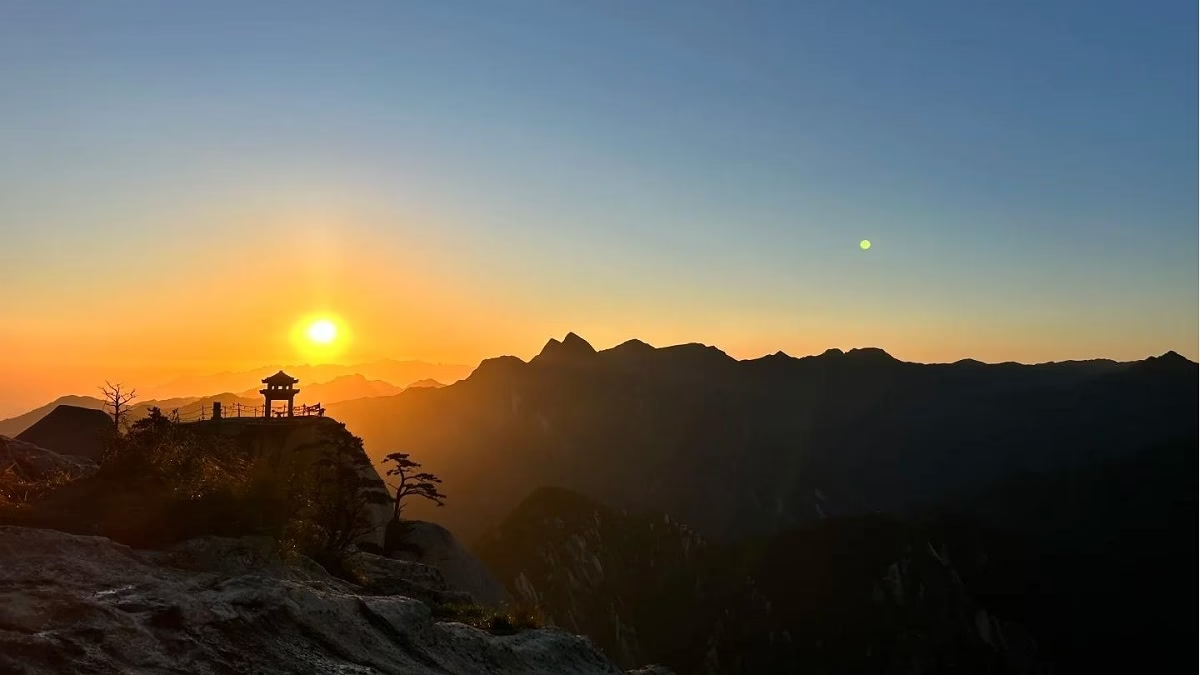Huashan Mountain is famous for its dramatic peaks and breathtaking views, especially at sunrise. Tackling the mountain in winter, especially during the night, requires careful planning and preparation. If I could give you one piece of advice: this adventure is both challenging and rewarding. Here’s my detailed guide to winter night hiking on Huashan to catch that unforgettable sunrise.
Winter Night Hiking on Huashan: My Timing and Itinerary
Arriving at Huashan North Station
- 22:40: I arrived at Huashan North Station and made my way to the mountain. The night was cold, but I was excited for what lay ahead.
Starting the Hike
- 23:20: I began my ascent. Since I didn’t want to reach the top too early, I took my time, choosing a slower pace that allowed me to enjoy the journey without rushing. It was a great way to pace myself for the long night ahead.
Resting at the Halfway Hamburger Shop
- 03:30: I reached the halfway point, where I found a hamburger shop. This place was a lifesaver—it had sofas, and the heating was on full blast, so I could take a proper rest before continuing my hike. It was the perfect pit stop to recharge for the next stretch.
Continue the Ascent
- 05:00: After a good rest, I continued my climb. The temperature was dropping, so I kept moving to stay warm. It was a peaceful and quiet climb, and the views were stunning.
Reaching Jinsuo Pass
- 06:15: I made it to Jinsuo Pass, which is just 20 minutes away from East Peak. Here, I met a few hikers who had already come down. They mentioned how cold it was at the top, so they were just pacing up and down to stay warm. I was also concerned about the cold, so I decided to rest here for about 30 minutes to catch my breath.
Final Push to East Peak
- 06:50: I finally made my way toward East Peak to get a glimpse of the sunrise.
- 07:10: When I reached East Peak, the view was incredible—but, unfortunately, the weather was cloudy, and I couldn’t see the sunrise. I wasn’t too disappointed, though, because I had come all this way to enjoy the mountain, and it still felt amazing to be there.
Exploring After Sunrise
- After the sunrise, I decided to explore the other peaks. Since they were all relatively close, I was able to visit them without much effort. I could have taken the cable car down, but I decided to walk to the West Peak instead.
Reaching the West Cable Car Station
- 08:10: I made my way to the West Peak Cable Car station. It was a great spot to catch the cable car down.
- 08:40: I arrived at the bus area at the scenic spot, and after a short ride, I made my way back to the foot of the mountain.
Heading Back to the City
- 09:25: I reached the base of the mountain and hopped on the bus that would take me back to the city.
- 10:07: I boarded the high-speed train to head back home.
- 14:26: By the time I arrived in Chengdu, I felt satisfied with my experience.
Key Considerations for Winter Night Hiking on Huashan
- Off-Season Prices: After December 1st, Huashan enters its off-peak season, and ticket prices drop from 160 RMB to 100 RMB. However, winter brings its own challenges, such as snow and ice, which may cause some attractions or services to be unavailable.
- Cold Temperatures at the Summit: There are no shelters at the top of Huashan. The temperatures can be freezing, and the wind is harsh. I made sure to pack plenty of warm clothing to stay comfortable during the hike.
- Quieter Winter Hike: The winter night hike is much quieter compared to peak season. I found it peaceful and more relaxed, with fewer crowds. The hike takes about 4-6 hours, and the trail is well-lit, making it quite safe. I also met other hikers along the way, which made the journey feel secure.
- Warm Rest Stops: There are only two places along the trail where you can warm up: a hamburger shop and a teahouse. The teahouse charges 30 RMB per person, while the hamburger shop requires a purchase (around 30+ RMB per person). Outside of these, all other rest spots are exposed to the cold, so I made sure to rest at these indoor locations to avoid freezing.
- Weather Conditions and Gear: Before I started the hike, I checked the weather. Since it had snowed recently, I brought crampons for extra traction. I found that trekking poles weren’t as helpful on icy surfaces, so I focused on my balance and footing instead.
- Convenience of Overnight Shops: There are small shops along the way that stay open throughout the night. I was able to buy snacks, drinks, and even rent a portable charger if needed. It was a nice touch that made the journey a lot more convenient.

